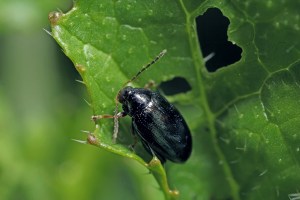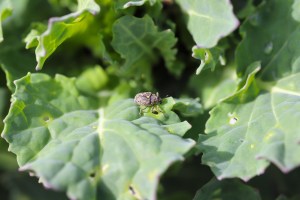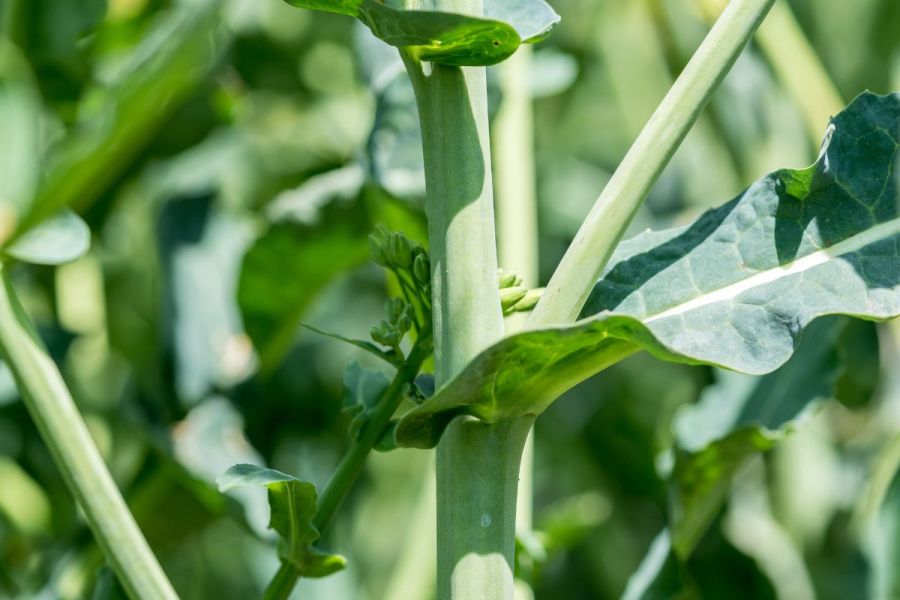The questions around applying pyrethroid-based insecticides aren’t new, with many feeling their use is severely limited and, in some cases, detrimental. CPM discovers whether they still have a place on farm.
“In my opinion, it’s pretty pointless applying pyrethroids against CSFB.”
By Melanie Jenkins and Rob Jones
A lot of debate has circulated among agronomists as to whether or not to apply pyrethroids, with many opting to explore other forms of integrated pest management (IPM). Although their use against key species such as cabbage stem flea beetle (CSFB) is severely limited due to resistance, could such insecticides still have a place against other pests such as rape winter stem weevil (RWSW)?
According to Agrii’s David Leaper, there’s been a lot of discussion in the industry about what to do because of the insecticides’ failure to target adult CSFB. “Many have moved away from pyrethroids in favour of other options, but there might still be some instances where growers want to apply them.”

When an oilseed rape crop is being decimated by cabbage stem flea beetle it’s really difficult to sit back and do nothing, says Alison Hardesty.
On most of her farms, agronomist Alison Hardesty of ProCam tries to avoid using pyrethroids unless the farmer really wants to. This is due to their limited effectiveness and the harm they can do to beneficial insects. “When an oilseed rape crop is being decimated by CSFB it’s really difficult to sit back and do nothing, so it often conspires that growers will apply them as an act of desperation.”
Alison says she’s experienced instances where two or three pyrethroid sprays have been applied to try to tackle CSFB, but she doesn’t believe this has much, if any, benefit. “Growers are exploring all sorts of different tactics to improve the effectiveness of pyrethroids, from spraying at night to using different adjuvants, to try and increase efficacy.
“But in most cases, we don’t know what the level of resistance is and we’re just damaging the local population of beneficial insects,” she stresses. “In my opinion, it’s pretty pointless applying pyrethroids against CSFB.”
Alison’s advice for those who are worried about their OSR surviving CSFB adults might not be what most expect. “When you’re concerned about a crop and feel like it’s disappearing, there’s a temptation to go and look at it every day. But once you’ve made the decision to avoid using pyrethroids it’s better that you don’t keep looking at the crop or you may feel the urge to spray.
“Leave it longer before going to see what’s happening in a dry spell, because if you get some rain and the growing conditions improve, the plant can quickly pick up and grow away without intervention.”
Although Alison hasn’t experienced large issues with RWSW on many farms, she’ll employ pyrethroids to try and target the pest when it is present. “But I don’t think every farm has to spray for that particular pest, only those with a history of problems.”
The egg laying period of RWSW starts in September and can extend into November, or further depending on how mild the winter is, meaning a later spray could target this period, says David. He feels that with RWSW, there might still be an opportunity to spray the crop later, but it’s arbitrary as to when this is. “If growers are intending to go over crops, in some instances it might be worth adding a pyrethroid into the tank.”

Instances of rape winter stem weevil can be sporadic and it seems to be worse where plants are already stressed from another issue.
But because of the lack of data on the pest, it’s difficult to know exactly when to time a spray, says Alison. “If you know the pest has previously been an issue on farm, then it might be worth applying a pyrethroid with your autumn fungicide, but don’t do it prophylactically.
“The pest can be sporadic and it seems to be worse where plants are already stressed from another issue. I see more instances of it in compacted areas, gateways and on headlands. I don’t believe there is any known resistance to pyrethroids but I think there could be a timing issue,” says Alison.
Like with CSFB, the opportunity to tackle RWSW could be in cultural control methods rather than chemical solutions. David feels a lot of growers are already turning to alternatives such as companion crops, leaving straw and delaying drilling.
To that effect, Alison says bigger stemmed plants cope better with CSFB than thinner stemmed ones, and it could be same with RWSW. “Early drilling may be beneficial, allowing the plants to establish before the main migration. And plants with wider stem collars going into the autumn may have less larvae in the stem later and are better placed to cope with an infestation.”
As well as selecting varieties with good autumn vigour, she suggests focusing on nutrition, making sure the soil pH is correct, and areas of compaction have been dealt with, so the plant has the best opportunity to establish well. “And not forgetting waiting until there’s moisture to drill to allow the crop the grow up straight away. This season, the conditions have been really favourable, allowing growers to plant OSR into good moist seedbeds.”
In other cases, growers may have opted to up their seed rate to achieve more plants/m², but Alison feels this can have a negative effect on yield as plants don’t branch as well. This can result in a lot of plants with thin stems which are more vulnerable to attack. “The thinner stems will die prematurely, whereas thicker stems can cope with some level of infestation.
“Greater branching from plants drilled at lower seed rates may also be beneficial as there’s less likelihood of larvae travelling down the leaf petiole and making it into the main stem. Where there are less plants, so long as they’re healthy, they’ll grow to take up the space. Some of my best crops have been those that looked the thinnest in the spring.
“Insecticides really should be the last resort once all other management techniques have been employed,” she adds.
This article was taken from the latest issue of CPM. Read the article in full here.
For more articles like this, subscribe here.
Sign up for Crop Production Magazine’s FREE e-newsletter here.




